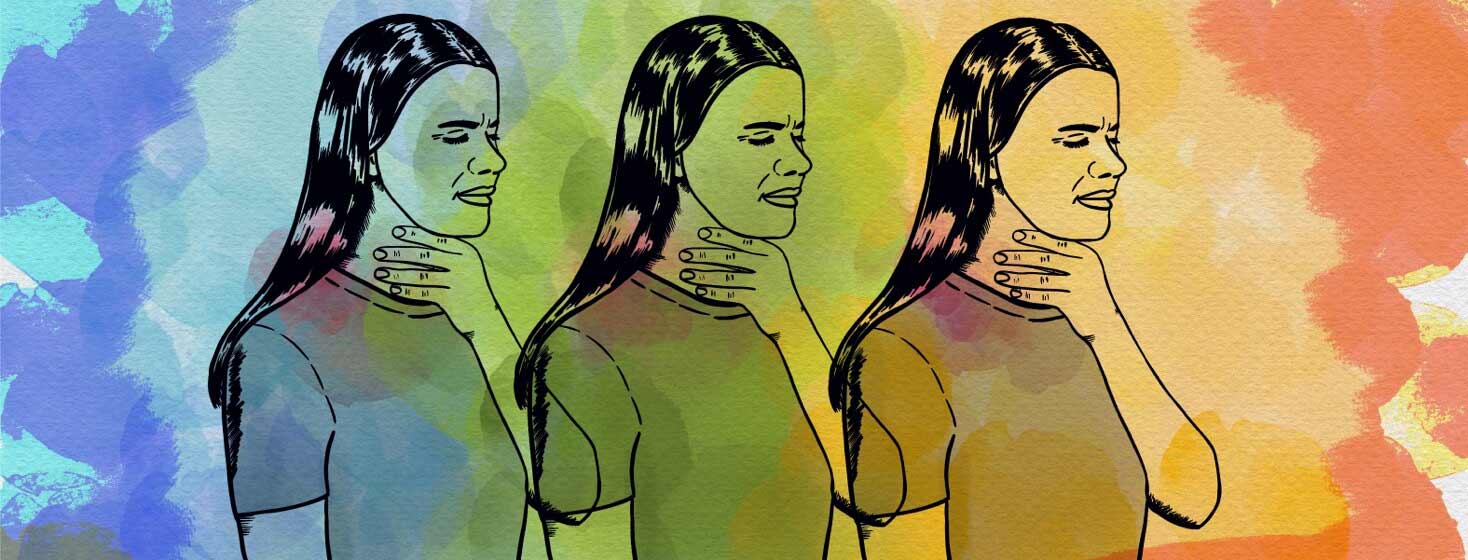Is It Eosinophilic Esophagitis (EoE) or Reflux?
Reviewed by: HU Medical Review Board | Last reviewed: February 2023 | Last updated: October 2024
Eosinophilic esophagitis (EoE) is a condition that affects the esophagus. The esophagus is the tube that moves food from your mouth to your stomach after you eat. In people with EoE, inflammation causes damage to the esophagus over time. This is what leads to symptoms like difficulty swallowing or chest pain.1,2
Gastroesophageal reflux disease (GERD), also called acid reflux or simply reflux, affects the esophagus too. Damage to the esophagus from reflux is caused by stomach acid and can cause similar issues to EoE. It can sometimes be hard to tell them apart based on symptoms before having medical testing.3
Sources of inflammation in EoE versus reflux
Although both reflux and EoE cause damage to the esophagus, they do so in different ways. This is one way to tell them apart. Essentially, the damage caused by reflux is not related to the immune system in the same way EoE is.1-5
When you have allergies, your immune system uses eosinophils to react. Eosinophils are a type of white blood cell that plays a role in creating inflammation. Similarly, when you have EoE, eosinophils build up in the esophagus. This buildup beyond a normal level leads to damage of the esophagus tissue. In EoE, this reaction can be triggered by certain foods or other environmental allergens (like pollen).1,2,4,5
On the other hand, in people with reflux, inflammation is caused by stomach acid-related damage. People with reflux have backflow of stomach acid into the esophagus. This is often because the opening that separates the stomach from the esophagus does not close all the way. Stomach acid can splash up into the bottom of the esophagus and lead to inflammation.3,5
Shared symptoms of EOE and reflux
Because both EoE and reflux affect the esophagus, they can have similar symptoms. Some of these symptoms include:1-5
- Trouble swallowing (dysphagia)
- Heartburn or chest pain
- Regurgitation of food, liquids, or stomach acid into the throat or mouth
- Ongoing cough
Potential symptom differences
There are some differences in symptoms between EoE and reflux, however. For example, with reflux, regurgitation of stomach acid (heartburn) is often worse when lying down or at night.3,5
With EoE, damage over time can lead to narrowing or scarring of the esophagus. This can make it hard to completely pass food into the stomach. Undigested food can build up before it gets to the stomach. For this reason, people with EoE may throw up or cough up undigested food. They may also have a food impaction, where clumps of food get stuck in the esophagus.2,4,5
Because EoE is not caused by stomach acid, symptoms of EoE do not always get better with antacid drugs. However, in many people with EoE, reflux medicines such as proton pump inhibitors (PPIs) can help strengthen the protective barrier in the esophagus. In people with reflux, PPIs help by reducing the acidity of the stomach acid that causes the damage.6
In children, EoE may cause trouble eating, poor growth, and regular vomiting.2-5
Diagnosing EoE versus reflux
Since EoE is an allergy immune system issue, people who have it often have other related allergic conditions as well. If you have a history of other allergic conditions, your doctor might suspect EoE rather than reflux. These allergic conditions may include:2,4
- Asthma
- Allergic rhinitis (seasonal allergies or hay fever)
- Atopic dermatitis (eczema)
There are some common steps to diagnosing both conditions. For example, most people with esophagus-related symptoms will try antacid drugs for a few weeks. People with reflux will usually have symptom improvement. If a person does not respond to antacids, they may need further tests for EoE.2,7,8
An upper endoscopy (EGD) can be done to look at the esophagus to help tell EoE apart from reflux. An EGD involves putting a small camera down a person’s mouth while they are asleep. During an EGD, a doctor can take a small sample of esophagus tissue. This sample is then looked at under a microscope.2,7,8
If a person has EoE, many eosinophils will be present. These eosinophils will keep being present even after that person takes antacid drugs for several weeks. General blood tests can be used to find higher levels of eosinophils in those with EoE than in reflux. Not all EoE patients with have high levels of eosinophils in their blood.2,7,8
Finding the right specialist to diagnose EoE
Finding a doctor to make the right diagnosis of reflux versus EoE may be challenging. It is possible to be misdiagnosed with reflux when you have EoE, since both issues are so similar. This can cause frustrating delays in treatment.2,4,5
Some people with EoE may see a specialist called a gastroenterologist first and complete a trial of antacid drugs. If symptoms do not improve, the gastroenterologist will perform an endoscopy and biopsy for diagnosis.4
If testing confirms EoE, the gastroenterologist will work with an allergy and immunology specialist to treat the condition. These doctors can help with prescribing the right drugs or creating diet plans to manage EoE symptoms.4

Join the conversation